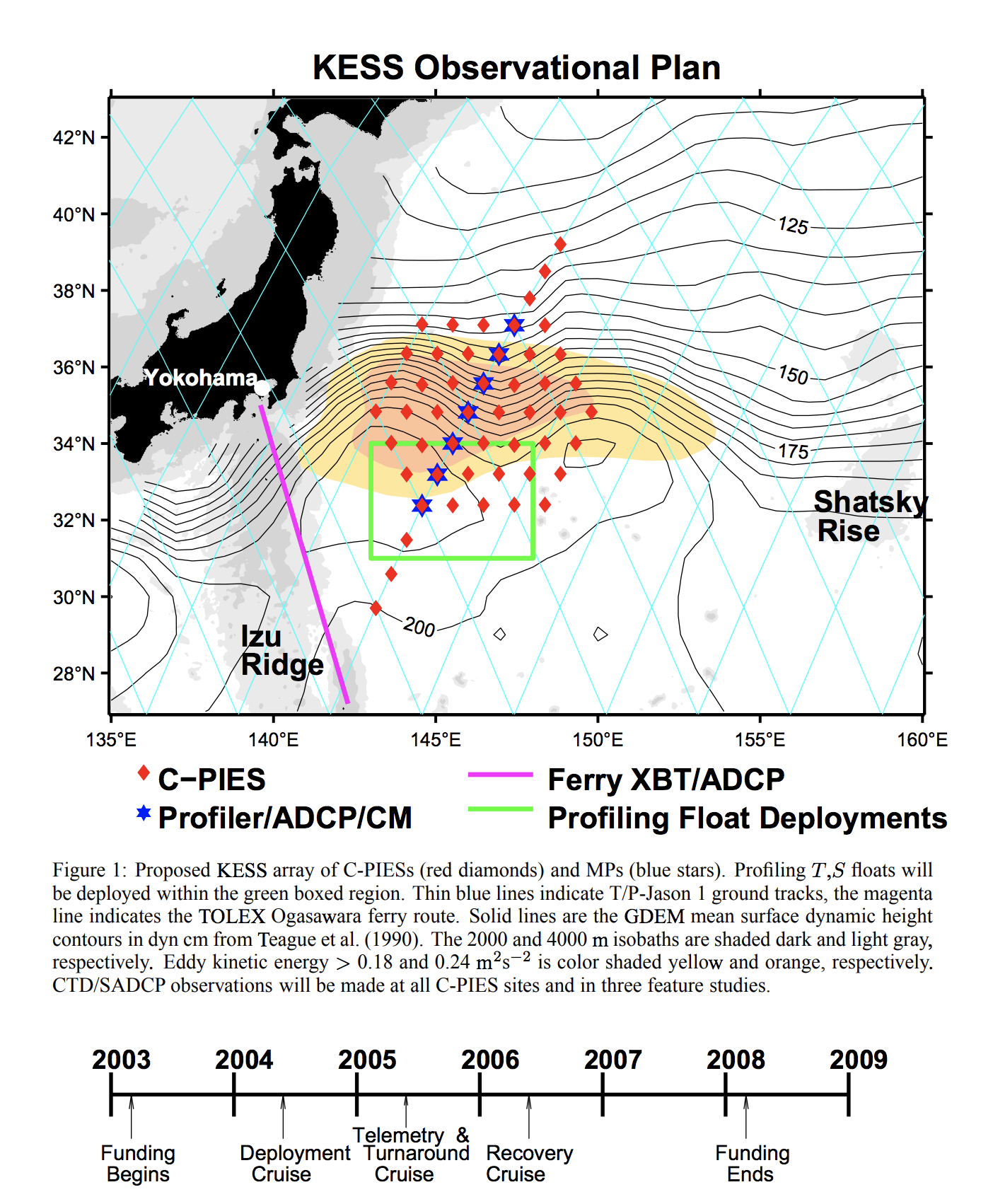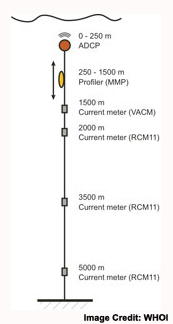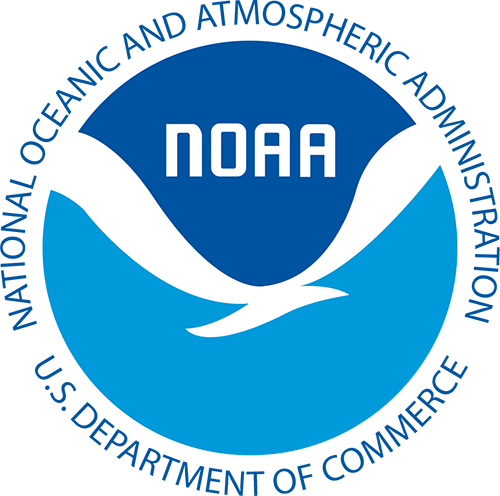Kuroshio Extension System Study

Kuroshio Extension System Study (KESS) is a collaborative effort between the Woods Hole Oceanographic Institution, the University of Rhode Island, and the University of Hawaii. The purpose of KESS is to understand the processes that govern the variability of and the interaction between the Kuroshio Extension and its recirculation gyre. To do this it will employ a large array of in-situ measurements from combination pressure gauge and inverted echo sounders, current meter moorings, and profiling floats, together with satellite altimeter and sea surface temperature data.

The warm, northward-flowing waters of the Kuroshio western boundary current leave the Japanese coast to flow eastward into the North Pacific as a free jet—the Kuroshio Extension. The Kuroshio Extension forms a vigorously meandering boundary between the warm subtropical and cold northern waters of the Pacific. A recirculation gyre exists to the south of the Kuroshio Extension. Another may exist to the north. This is also one of the most intense air–sea heat exchange regions on the globe, where the warm Kuroshio waters encounter the cold dry air masses coming from the Asian continent. The Kuroshio Extension system exhibits variations which strongly affect North American climate. Among the diverse fields that will benefit from this work are fisheries and climate research, and understanding storm tracks.
Understanding the processes that govern the variability of and the interaction between the Kuroshio Extension and the recirculation gyre is the goal of this study. Processes coupling the baroclinic and barotropic circulations will be examined by case studies of the local dynamical balances, particularly during strong meandering events. The mechanisms by which water masses are exchanged and modified as they cross the front will be characterized. The objective is to determine the processes governing the strength and structure of the recirculation gyres in relation to the meandering jet.
 Principal Investigators cooperating from three US institutions postulate dynamical and thermodynamical connections from mesoscale eddies to gyre-scale recirculations and to global climate variations and propose observations designed to test these hypotheses. They will deploy a state-of-the-art array consisting of moored-profiler and current-meter moorings and inverted echo sounders equipped with near-bottom pressure and current sensors. Shipboard surveys will conduct case studies of the water properties and currents throughout the water column. Profiling floats will monitor the temperature and salinity structure in the recirculation gyre south of the Kuroshio Extension. The proposed approach makes extensive use of satellite data (surface temperature and sea-surface height). They will also collaborate closely with Japanese scientists studying the overall Kuroshio system.
Principal Investigators cooperating from three US institutions postulate dynamical and thermodynamical connections from mesoscale eddies to gyre-scale recirculations and to global climate variations and propose observations designed to test these hypotheses. They will deploy a state-of-the-art array consisting of moored-profiler and current-meter moorings and inverted echo sounders equipped with near-bottom pressure and current sensors. Shipboard surveys will conduct case studies of the water properties and currents throughout the water column. Profiling floats will monitor the temperature and salinity structure in the recirculation gyre south of the Kuroshio Extension. The proposed approach makes extensive use of satellite data (surface temperature and sea-surface height). They will also collaborate closely with Japanese scientists studying the overall Kuroshio system.
The Kuroshio Extension system is the right place to test hypotheses formulated from previous observational and modeling studies because of its distinct stratification, bathymetry, and thermohaline circulation. The time is right to conduct a study of the Kuroshio Extension system. Over the last several decades a number of substantial programs have been undertaken, focused on different parts of these western boundary currents, mostly in the Atlantic. These include studies of the Brazil-Malvinas Confluence, the Western Tropical Atlantic Studies, the Subtropical Atlantic Climate Study, and the North Atlantic Current Study. The program that is most closely related to this proposal and, arguably the most ambitious, was the Synoptic Ocean Prediction Experiment. These studies fundamentally changed the scientific community’s understanding of the interconnected system of currents, recirculations, eddies, cross-frontal exchange mechanisms, and processes affecting the upper ocean heat budget. This improved dynamical understanding enables these scientists to pose new questions treating the western boundary current regime as a coupled system, linking eddy and gyre and global scales. Today’s fundamentally improved remote-sensing, in situ observational, and computing abilities enable them to address these questions in a comprehensive manner.
For more information, please view the KESS page
Partners/Collaborators
This is a collaborative project with the Graduate School of Oceanography -University of Rhode Island, Hokkaido University, University of Hawaii at Manoa, School of Ocean and Earth Science Technology - University of Hawaii at Manoa, NOAA - Pacific Marine Environmental Laboratory, International Pacific Research Center - University of Hawaii, and the Scripps Institution of Oceanography - University of San Diego.

